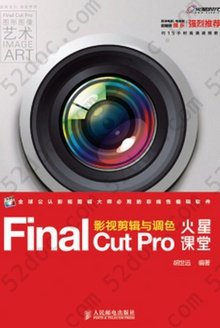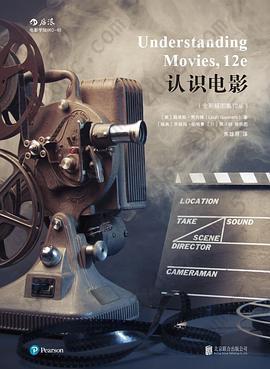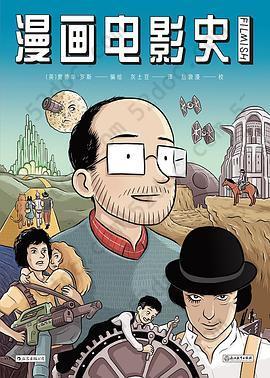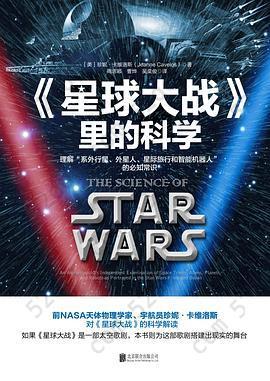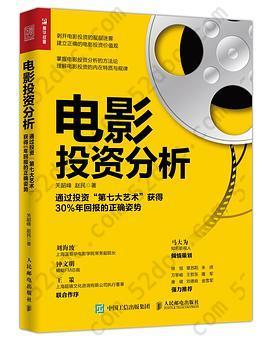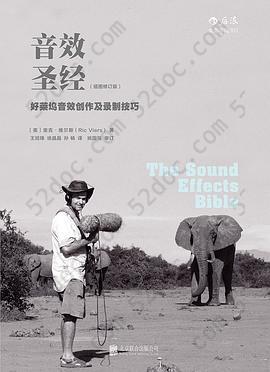注重体验与质量的电子书资源下载网站
分类于: 职场办公 计算机基础
简介
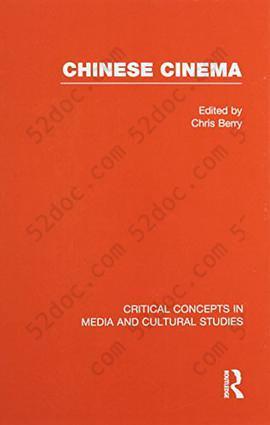
目录
Volume I: Chinese Cinema History
Part 1: Before 1949
1.1 Origins
1. Pang Laikwan, ‘Walking in and Out of the Spectacle: China’s Earliest Film Scene’, Screen, 2006, 47, 1, 66–80.
2. Zhang Zhen, ‘Teahouse, Shadowplay, Bricolage: Laborer’s Love and the Question of Early Chinese Cinema’, in Yingjin Zhang (ed.), Cinema and Urban Culture in Shanghai, 1922–1943 (Stanford University Press, 1999), pp. 27–50.
1.2 Before the War of Resistance Against Japan
3. Miriam Bratu Hansen, ‘Fallen Women, Rising Stars, New Horizons: Shanghai Silent Films as Vernacular Modernism’, Film Quarterly, 2000, 54, 1, 10–22.
4. Ning Ma, ‘The Textual and Critical Difference of Being Radical: Reconstructing Chinese Leftist Films of the 1930s’, Wide Angle, 1989, 11, 2, 22–31.
1.3 Wartime Cinema
5. Weihong Bao, ‘In Search of a "Cinematic Esperanto": Exhibiting Wartime Chongqing Cinema in Global Context’, Journal of Chinese Cinemas, 2009, 3, 2, 135–47.
6. Po-shek Fu, ‘Projecting Ambivalence: Chinese Cinema in Semi-Occupied Shanghai, 1937–1941’, in Wen-hsin Yeh (ed.), Wartime Shanghai (Routledge, 1998), pp. 86–110.
Part 2: The People’s Republic
2.1 The Mao Era (1949–76)
7. Paul Clark, ‘Yanan and Shanghai’, Chinese Cinema: Culture and Politics Since 1949 (Cambridge University Press, 1987), pp. 25–55.
8. Yomi Braester, ‘A Big Dying Vat: The Vilifying of Shanghai During the Good Eighth Company Campaign’, Modern China, 2005, 31, 4, 411–47.
9. Gina Marchetti, ‘Two Stage Sisters: The Blossoming of a Revolutionary Aesthetic’, Jump Cut, 1988, 34, 95–106.
10. Kristine Harris, ‘Re-makes/Re-models: The Red Detachment of Women Between Stage and Screen’, The Opera Quarterly, 2010, 26, 2–3, 31–42.
2.2 Since 1989
11. Tony Rayns, ‘The New Chinese Cinema: An Introduction’, in Kaige Chen and Wan Zhi, King of the Children (Faber, 1989), pp. 1–59.
12. Paul Pickowicz, ‘Huang Jianxin and the Notion of Postsocialism’, in Nick Browne et al. (eds.), New Chinese Cinemas: Forms, Identities, Politics (Cambridge University Press, 1994), pp. 57–87.
13. Jinhua Dai, ‘A Scene in the Fog: Reading the Sixth Generation Films’, tr. Yiman Wang, in Jing Wang and Tani Barlow (eds.), Cinema and Desire: Feminist Marxism and Cultural Politics in the Work of Dai Jinhua (Verso, 2002), pp. 71–98.
14. Zhangke Jia, ‘Irrepressible Images: New Films in China from 1995’, China Perspectives, 2010, 1, 46–51.
Part 3: Hong Kong and Taiwan
3.1 Hong Kong
15. Stephen Teo, ‘Early Hong Kong Cinema: The Shanghai Hangover’, Hong Kong Cinema: The Extra Dimensions (BFI, 1997), pp. 3–28.
16. Poshek Fu, ‘The 1960s: Modernity, Youth Culture, and Hong Kong Cantonese Cinema’, in Poshek Fu and David Desser (eds.), The Cinema of Hong Kong: History, Arts, Identity (Cambridge University Press, 2000), pp. 71–89.
17. Ackar Abbas, ‘The New Hong Kong Cinema and the Deja Disparu’, Discourse, 1994, 16, 3, 65–77.
3.2 Taiwan
18. Guo-Juin Hong, ‘Historiography of Absence: Taiwan Cinema Before New Cinema 1982’, Journal of Chinese Cinemas, 2010, 4, 1, 5–14.
19. June Yip, ‘Towards the Postmodern: Taiwanese New Cinema and Alternative Visions of Nation’, Envisioning Taiwan: Fiction, Cinema and the Nation in the Cultural Imaginary (Duke University Press, 2004), pp. 49–68.
20. Kuan-Hsing Chen, ‘A Borrowed Life in Banana Paradise: De-Cold War/Decolonization, or Modernity and its Tears’, in Chris Berry and Feii Lu (eds.), Island on the Edge: Taiwan New Cinema and After (Hong Kong University Press, 2005), pp. 39–54.
Volume II: Chinese Film Production and Reception
Part 4: Production
4.1 Studio Studies
21. Poshek Fu, ‘Hong Kong and Singapore: A History of the Cathay Cinema’, in Wong Ainling (ed.), The Cathay Story (Hong Kong Film Archive, 2002), pp. 60–75.
22. Lily Kong, ‘Shaw Cinema Enterprise and Understanding Cultural Industries’, in Poshek Fu (ed.), China Forever: The Shaw Brothers and Diasporic Cinema (University of Illinois Press, 2008), pp. 27–56.
23. Steve Fore, ‘Golden Harvest Films and the Hong Kong Movie Industry in the Realm of Globalization’, The Velvet Light Trap, 1994, 34, 40–58.
4.2 Globalization
24. Michael Curtin, ‘Hollywood Takes Charge in Taiwan’, Playing to the World’s Biggest Audience: The Globalization of Chinese Film and TV (University of California Press, 2007), pp. 85–108.
25. Stanley Rosen, ‘The Wolf at the Door: Hollywood and the Film Market in China from 1994–2000’, in Eric J. Heikkila and Rafael Pizarro (eds.), Southern California in the World and the World in Southern California (Greenwood Publishing Group, 2002), pp. 49–78.
26. Darrell William Davis and Emily Yueh-yu Yeh, ‘Re-nationalizing China’s Film Industry: Case Study on the China Film Group and Film Marketization’, Journal of Chinese Cinemas, 2008, 2, 1, 37–52.
4.3 Film Movements
27. Pak-Tong Cheuk, ‘The Beginning of the Hong Kong New Wave: The Interactive Relationship Between Television and the Film Industry’, Post Script: Essays in Film and the Humanities, 1999, 19, 1, 10–27.
28. Emilie Yueh-Yu Yeh and Darrell William Davis, ‘Challenges and Controversies of the Taiwan New Cinema’, Taiwan Film Directors: A Treasure Island (Columbia University Press, 2005), pp. 55–89.
29. Xinyu Lu, ‘Rethinking China’s New Documentary Movement: Engagement with the Social’, tr. Tan Jia and Lisa Rofel, in Lu, Chris Berry, and Lisa Rofel (eds.), The New Chinese Documentary Film Movement: For the Public Record (Hong Kong University Press, 2010), pp. 15–48.
Part 5: Reception
5.1 Censorship Outside the People’s Republic
30. Xiao Zhiwei, ‘Constructing a New National Culture: Film Censorship and the Issues of Cantonese Dialect, Superstition, and Sex in the Nanjing Decade’, in Yingjin Zhang (ed.), Cinema and Urban Culture in Shanghai, 1922–1943 (Stanford University Press, 1999), pp. 183–99.
31. Kenny K. K. Ng, ‘Inhibition vs. Exhibition: Political Censorship of Chinese and Foreign Cinemas in Postwar Hong Kong’, Journal of Chinese Cinemas, 2008, 2, 1, 23–36.
5.2 Foreign Films/Chinese Audiences
32. Tina Mai Chen, ‘Internationalism and Cultural Experience: Soviet Films and Popular Chinese Understandings of the Future in the 1950s’, Cultural Critique, 2004, 58, 82–114.
33. Kuei-fen Ch’iu, ‘The Question of Translation in Taiwanese Colonial Cinematic Space’, Journal of Asian Studies, 2011, 70, 1, 77–97.
5.3 Chinese Films in the USA
34. David Desser, ‘The Kung Fu Craze: Hong Kong Cinema’s First American Reception’, in Poshek Fu and David Desser (eds.), The Cinema of Hong Kong: History, Arts, Identity (Cambridge University Press, 2000), pp. 19–43.
35. Frances Gateward, ‘Wong Fei-hung in Da House: Hong Kong Martial-Arts Films and Hip-Hop Culture’, in See-kam Tan, Peter X. Feng, and Gina Marchetti (eds.), Chinese Connections: Critical Perspectives on Film, Identity, and Diaspora (Temple University Press, 2009), pp. 51–67.
36. Cindy Hing-Yuk Wong, ‘Cities, Cultures and Cassettes: Hong Kong Cinema and Transnational Audiences’, Post Script: Essays in Film and the Humanities, 1999, 19, 1, 87–106.
5.4 Contemporary Audiences in the People’s Republic
37. Seio Nakajima, ‘Film Clubs in Beijing: The Cultural Consumption of Chinese Independent Films’, in Pickowicz and Yingjin Zhang (eds.), From Underground to Independent: Alternative Film Culture in Contemporary China (Rowman and Littlefield, 2006), pp. 161–87.
38. Elaine Jeffreys, ‘Zhang Ziyi and China’s Celebrity–Philanthropy Scandals’, Portal: Journal of Multidisciplinary International Studies, 2011, 8, 1, 1–21.
Volume III: Genre and Gender in the Chinese Cinema
Part 6: Genre
6.1 Martial Arts Films
39. Stephen Teo, ‘The Rise of Kung Fu, from Wong Fei-hong to Bruce Lee’, Chinese Martial Arts Cinema: The Wuxia Tradition (Edinburgh University Press, 2009), pp. 58–85.
40. David Bordwell, ‘Richness through Imperfection: King Hu and the Glimpse’, in Poshek Fu and David Desser (eds.), The Cinema of Hong Kong: History, Arts, Identity (Cambridge University Press, 2000), pp. 113–36.
41. Kenneth Chan, ‘The Global Return of the Wu Xia Pian (Chinese Sword-Fighting Movie): Ang Lee’s Crouching Tiger Hidden Dragon’, Cinema Journal, 2004, 43, 4, 3–17.
6.2 Opera Films
42. Chris Berry and Mary Farquhar, ‘Shadow Opera: Towards a New Archaeology of the Chinese Cinema’, PostScript, 2011, 20, 2 & 3, 25–42.
43. Xinyu Dong, ‘Meeting of the Eyes: Invented Gesture, Cinematic Choreography, and Mei Lanfang’s Kun Opera Film’, The Opera Quarterly, 2010, 26, 2–3, 200–19.
6.3 Minority Nationalities and Minority Nationality Films
44. Dru Gladney, ‘Tian Zhuangzhuang, the Fifth Generation, and Minorities Films in China’, Public Culture, 1995, 8, 161–75.
45. Ether C. M. Yau, ‘Is China the End of Hermeneutics? Or, Political and Cultural Usage of Non-Han Women in Mainland Chinese Films’, Discourse, 1989, 11, 2, 115–36.
6.4 Global Genres/Chinese Cinema
46. Chris Berry, ‘Wedding Banquet: A Family (Melodrama) Affair’, in Chris Berry (ed.), Chinese Films in Focus: 25 New Takes (BFI Publishing, 2003), pp. 183–90.
47. Jenny Kwok Wah Lau, ‘Besides Fists and Blood: Hong Kong Comedy and Its Master of the Eighties’, Cinema Journal, 1998, 37, 2, 18–34.
48. Audrey Yue, ‘Preposterous Hong Kong Horror: Rouge’s (Be)hindsight and a (Sodomitical) Chinese Ghost Story’, in Ken Gelber (ed.), The Horror Reader (Routledge, 2000), pp. 364–73.
49. Julian Stringer, ‘Centre Stage: Reconstructing the Bio-Pic’, Cineaction, 1997, 42, 28–39.
Part 7: Gender and Sexuality
7.1 Women and Women’s Films in the People’s Republic
50. Jinhua Dai, ‘Human, Woman, Demon: A Woman’s Predicament’, tr. Kirk A. Denton, in Jing Wang and Tani E. Barlow (eds.), Cinema and Desire: Feminist Marxism and Cultural Politics in the Work of Dai Jinhua (Verso, 2002), pp. 151–71.
51. Mary Ann Farquhar, ‘The "Hidden" Gender in Yellow Earth’, Screen, 1992, 33, 2, 154–64.
7.2 Men and Masculinity in Hong Kong
52. Laikwan Pang, ‘Masculinity in Crisis: Films of Milkyway Image and Post-1997 Hong Kong Cinema’, Feminist Media Studies, 2002, 2, 3, 325–40.
53. Julian Stringer, ‘"Your Tender Smiles Give Me Strength": Paradigms of Masculinity in John Woo’s A Better Tomorrow and The Killer’, Screen, 1997, 38, 1, 25–41.
7.3 Queer
54. Chris Berry, ‘Staging Gay Life in China: Zhang Yuan and East Palace, West Palace’, Jump Cut, 1998, 42, 84–9.
55. Travis Kong, ‘Queering Masculinity in Hong Kong Movies’, in Laikwan Pang and Day Wong (eds.), Masculinities and Hong Kong Cinema (Hong Kong University Press, 2005), pp. 57–80.
56. Song Hwee Lim, ‘Confessing Desire: The Poetics of Tsai Ming-liang's Queer Cinema’, Celluloid Comrades: Representations of Male Homosexuality in Contemporary Chinese Cinemas (University of Hawai’i, 2006), pp. 126–52.
57. Fran Martin, ‘Critical Presentism: New Chinese Lesbian Cinema’, Backward Glances: Contemporary Chinese Cultures and the Female Homoerotic Imaginary (Duke University Press, 2010), pp. 147–79.
58. See Kam Tan, ‘The Cross-Gender Performances of Yam Kim-Fei, or The Queer Factor in Postwar Hong Kong Cantonese Opera/Opera Films’, in Andrew Grossman (ed.), Queer Asian Film: Shadows in the Shade (Harrington Press, 2000), 201–12.
Volume IV: Chinese Film Directors and their Films
Part 8: Film Directors
8.1 Fruit Chan
59. Pheng Cheah, ‘Fantasies of "Chinese-ness" and the Traffic in Women from Mainland China to Hong Kong in Fruit Chan’s Durian Durian’, in Helen F. Siu (ed.), Merchants’ Daughters: Women, Commerce, and Regional Culture in South China (Hong Kong University Press, 2010), pp. 259–72.
60. Esther M. K. Cheung, ‘The City that Haunts: The Uncanny in Fruit Chan’s Made in Hong Kong’, in Cheung and Chu Yiu-Wai, Between Home and the World: A Reader in Hong Kong Cinema (Oxford University Press), pp. 352–68.
8.2 Hou Hsiao-Hsien
61. Nick Browne, ‘Hou Hsiao-hsien’s Puppetmaster: The Poetics of Landscape’, Asian Cinema, 1996, 8, 1, 28–38.
62. James Udden, ‘"This Time He Moves": The Deeper Significance of Hou Hsiao-hsien’s Radical Break in Good Men, Good Women’, in Darrell William Davis and Ru-Shou Robert Chen (eds.), Cinema Taiwan: Politics, Popularity and State of the Arts (Routledge, 2007), pp. 183–202.
8.3 Ann Hui
63. Patricia Brett Erens, ‘Crossing Borders: Time, Memory, and the Construction of Identity in Song of the Exile’, Cinema Journal, 2000, 39, 4, 43–59.
8.4 Jia Zhangke
64. Jason McGrath, ‘The Independent Cinema of Jia Zhangke: From Postsocialist Realism to a Transnational Aesthetic’, in Zhang Zhen (ed.), The Urban Generation: Chinese Cinema and Society at the Turn of the Twenty-first Century (Duke University Press, 2007), pp. 81–114.
8.5 Eric Khoo
65. Gina Marchetti, ‘Global Modernity, Postmodern Singapore, and the Cinema of Eric Khoo’, in Sheldon H. Lu and Emilie Yueh-yu Yeh (eds.), Chinese-Language Film: Historiography, Poetics, Politics (University of Hawai’i Press, 2005), pp. 329–61.
8.6 Stanley Kwan
66. Berenice Reynaud, ‘Centre Stage: A Shadow in Reverse’, in Chris Berry (ed.), Chinese Films in Focus: 25 New Takes (BFI Publishing, 2003), pp. 31–8.
67. David L. Eng, ‘The Queer Space of China: Expressive Desire in Stanley Kwan’s Lan Yu’, Positions: East Asia Cultures Critique, 2010, 18, 2, 459–87.
8.7 Ang Lee
68. Leo Ou-fan Lee, ‘Ang Lee’s Lust, Caution and its Reception’, Boundary, 2008, 2, 35, 2, 223–38.
8.8 Ning Ying
69. Shuqin Cui, ‘Ning Ying’s Beijing Trilogy: Cinematic Configuration of Age, Class, and Sexuality’, in Zhen Zhang (ed.), The Urban Generation: Chinese Cinema and Society at the Turn of the Twenty-first Century (Duke University Press, 2007), pp. 241–63.
8.9 Johnnie To
70. Stephen Teo, ‘The Uneven Auteur’, Johnnie To and the Hong Kong Film Action Film (Hong Kong University Press, 2007), pp. 145–76.
8.10 Wong Kar-wai
71. Ackbar Abbas, ‘The Erotics of Disappointment’, in Lalanne et al. (eds.), Wong Kar Wai (Editions Dis Voir, 1997), pp. 39–81.
8.11 Edward Yang
72. Fredric Jameson, ‘Remapping Taipei’, The Geopolitical Aesthetic: Cinema and Space in the World System (Indiana University Press, 1992), pp. 114–57.
8.12 Zhang Yimou
73. Rey Chow, ‘The Force of Surfaces: Defiance in Zhang Yimou’s Films’, Primitive Passions: Visuality, Sexuality, Ethnography, and Contemporary Chinese Cinema (Columbia University Press, 1995), pp. 142–72.
74. Evans Chan, ‘Zhang Yimou’s Hero: The Temptation of Fascism’, Film International, 2004
Part 1: Before 1949
1.1 Origins
1. Pang Laikwan, ‘Walking in and Out of the Spectacle: China’s Earliest Film Scene’, Screen, 2006, 47, 1, 66–80.
2. Zhang Zhen, ‘Teahouse, Shadowplay, Bricolage: Laborer’s Love and the Question of Early Chinese Cinema’, in Yingjin Zhang (ed.), Cinema and Urban Culture in Shanghai, 1922–1943 (Stanford University Press, 1999), pp. 27–50.
1.2 Before the War of Resistance Against Japan
3. Miriam Bratu Hansen, ‘Fallen Women, Rising Stars, New Horizons: Shanghai Silent Films as Vernacular Modernism’, Film Quarterly, 2000, 54, 1, 10–22.
4. Ning Ma, ‘The Textual and Critical Difference of Being Radical: Reconstructing Chinese Leftist Films of the 1930s’, Wide Angle, 1989, 11, 2, 22–31.
1.3 Wartime Cinema
5. Weihong Bao, ‘In Search of a "Cinematic Esperanto": Exhibiting Wartime Chongqing Cinema in Global Context’, Journal of Chinese Cinemas, 2009, 3, 2, 135–47.
6. Po-shek Fu, ‘Projecting Ambivalence: Chinese Cinema in Semi-Occupied Shanghai, 1937–1941’, in Wen-hsin Yeh (ed.), Wartime Shanghai (Routledge, 1998), pp. 86–110.
Part 2: The People’s Republic
2.1 The Mao Era (1949–76)
7. Paul Clark, ‘Yanan and Shanghai’, Chinese Cinema: Culture and Politics Since 1949 (Cambridge University Press, 1987), pp. 25–55.
8. Yomi Braester, ‘A Big Dying Vat: The Vilifying of Shanghai During the Good Eighth Company Campaign’, Modern China, 2005, 31, 4, 411–47.
9. Gina Marchetti, ‘Two Stage Sisters: The Blossoming of a Revolutionary Aesthetic’, Jump Cut, 1988, 34, 95–106.
10. Kristine Harris, ‘Re-makes/Re-models: The Red Detachment of Women Between Stage and Screen’, The Opera Quarterly, 2010, 26, 2–3, 31–42.
2.2 Since 1989
11. Tony Rayns, ‘The New Chinese Cinema: An Introduction’, in Kaige Chen and Wan Zhi, King of the Children (Faber, 1989), pp. 1–59.
12. Paul Pickowicz, ‘Huang Jianxin and the Notion of Postsocialism’, in Nick Browne et al. (eds.), New Chinese Cinemas: Forms, Identities, Politics (Cambridge University Press, 1994), pp. 57–87.
13. Jinhua Dai, ‘A Scene in the Fog: Reading the Sixth Generation Films’, tr. Yiman Wang, in Jing Wang and Tani Barlow (eds.), Cinema and Desire: Feminist Marxism and Cultural Politics in the Work of Dai Jinhua (Verso, 2002), pp. 71–98.
14. Zhangke Jia, ‘Irrepressible Images: New Films in China from 1995’, China Perspectives, 2010, 1, 46–51.
Part 3: Hong Kong and Taiwan
3.1 Hong Kong
15. Stephen Teo, ‘Early Hong Kong Cinema: The Shanghai Hangover’, Hong Kong Cinema: The Extra Dimensions (BFI, 1997), pp. 3–28.
16. Poshek Fu, ‘The 1960s: Modernity, Youth Culture, and Hong Kong Cantonese Cinema’, in Poshek Fu and David Desser (eds.), The Cinema of Hong Kong: History, Arts, Identity (Cambridge University Press, 2000), pp. 71–89.
17. Ackar Abbas, ‘The New Hong Kong Cinema and the Deja Disparu’, Discourse, 1994, 16, 3, 65–77.
3.2 Taiwan
18. Guo-Juin Hong, ‘Historiography of Absence: Taiwan Cinema Before New Cinema 1982’, Journal of Chinese Cinemas, 2010, 4, 1, 5–14.
19. June Yip, ‘Towards the Postmodern: Taiwanese New Cinema and Alternative Visions of Nation’, Envisioning Taiwan: Fiction, Cinema and the Nation in the Cultural Imaginary (Duke University Press, 2004), pp. 49–68.
20. Kuan-Hsing Chen, ‘A Borrowed Life in Banana Paradise: De-Cold War/Decolonization, or Modernity and its Tears’, in Chris Berry and Feii Lu (eds.), Island on the Edge: Taiwan New Cinema and After (Hong Kong University Press, 2005), pp. 39–54.
Volume II: Chinese Film Production and Reception
Part 4: Production
4.1 Studio Studies
21. Poshek Fu, ‘Hong Kong and Singapore: A History of the Cathay Cinema’, in Wong Ainling (ed.), The Cathay Story (Hong Kong Film Archive, 2002), pp. 60–75.
22. Lily Kong, ‘Shaw Cinema Enterprise and Understanding Cultural Industries’, in Poshek Fu (ed.), China Forever: The Shaw Brothers and Diasporic Cinema (University of Illinois Press, 2008), pp. 27–56.
23. Steve Fore, ‘Golden Harvest Films and the Hong Kong Movie Industry in the Realm of Globalization’, The Velvet Light Trap, 1994, 34, 40–58.
4.2 Globalization
24. Michael Curtin, ‘Hollywood Takes Charge in Taiwan’, Playing to the World’s Biggest Audience: The Globalization of Chinese Film and TV (University of California Press, 2007), pp. 85–108.
25. Stanley Rosen, ‘The Wolf at the Door: Hollywood and the Film Market in China from 1994–2000’, in Eric J. Heikkila and Rafael Pizarro (eds.), Southern California in the World and the World in Southern California (Greenwood Publishing Group, 2002), pp. 49–78.
26. Darrell William Davis and Emily Yueh-yu Yeh, ‘Re-nationalizing China’s Film Industry: Case Study on the China Film Group and Film Marketization’, Journal of Chinese Cinemas, 2008, 2, 1, 37–52.
4.3 Film Movements
27. Pak-Tong Cheuk, ‘The Beginning of the Hong Kong New Wave: The Interactive Relationship Between Television and the Film Industry’, Post Script: Essays in Film and the Humanities, 1999, 19, 1, 10–27.
28. Emilie Yueh-Yu Yeh and Darrell William Davis, ‘Challenges and Controversies of the Taiwan New Cinema’, Taiwan Film Directors: A Treasure Island (Columbia University Press, 2005), pp. 55–89.
29. Xinyu Lu, ‘Rethinking China’s New Documentary Movement: Engagement with the Social’, tr. Tan Jia and Lisa Rofel, in Lu, Chris Berry, and Lisa Rofel (eds.), The New Chinese Documentary Film Movement: For the Public Record (Hong Kong University Press, 2010), pp. 15–48.
Part 5: Reception
5.1 Censorship Outside the People’s Republic
30. Xiao Zhiwei, ‘Constructing a New National Culture: Film Censorship and the Issues of Cantonese Dialect, Superstition, and Sex in the Nanjing Decade’, in Yingjin Zhang (ed.), Cinema and Urban Culture in Shanghai, 1922–1943 (Stanford University Press, 1999), pp. 183–99.
31. Kenny K. K. Ng, ‘Inhibition vs. Exhibition: Political Censorship of Chinese and Foreign Cinemas in Postwar Hong Kong’, Journal of Chinese Cinemas, 2008, 2, 1, 23–36.
5.2 Foreign Films/Chinese Audiences
32. Tina Mai Chen, ‘Internationalism and Cultural Experience: Soviet Films and Popular Chinese Understandings of the Future in the 1950s’, Cultural Critique, 2004, 58, 82–114.
33. Kuei-fen Ch’iu, ‘The Question of Translation in Taiwanese Colonial Cinematic Space’, Journal of Asian Studies, 2011, 70, 1, 77–97.
5.3 Chinese Films in the USA
34. David Desser, ‘The Kung Fu Craze: Hong Kong Cinema’s First American Reception’, in Poshek Fu and David Desser (eds.), The Cinema of Hong Kong: History, Arts, Identity (Cambridge University Press, 2000), pp. 19–43.
35. Frances Gateward, ‘Wong Fei-hung in Da House: Hong Kong Martial-Arts Films and Hip-Hop Culture’, in See-kam Tan, Peter X. Feng, and Gina Marchetti (eds.), Chinese Connections: Critical Perspectives on Film, Identity, and Diaspora (Temple University Press, 2009), pp. 51–67.
36. Cindy Hing-Yuk Wong, ‘Cities, Cultures and Cassettes: Hong Kong Cinema and Transnational Audiences’, Post Script: Essays in Film and the Humanities, 1999, 19, 1, 87–106.
5.4 Contemporary Audiences in the People’s Republic
37. Seio Nakajima, ‘Film Clubs in Beijing: The Cultural Consumption of Chinese Independent Films’, in Pickowicz and Yingjin Zhang (eds.), From Underground to Independent: Alternative Film Culture in Contemporary China (Rowman and Littlefield, 2006), pp. 161–87.
38. Elaine Jeffreys, ‘Zhang Ziyi and China’s Celebrity–Philanthropy Scandals’, Portal: Journal of Multidisciplinary International Studies, 2011, 8, 1, 1–21.
Volume III: Genre and Gender in the Chinese Cinema
Part 6: Genre
6.1 Martial Arts Films
39. Stephen Teo, ‘The Rise of Kung Fu, from Wong Fei-hong to Bruce Lee’, Chinese Martial Arts Cinema: The Wuxia Tradition (Edinburgh University Press, 2009), pp. 58–85.
40. David Bordwell, ‘Richness through Imperfection: King Hu and the Glimpse’, in Poshek Fu and David Desser (eds.), The Cinema of Hong Kong: History, Arts, Identity (Cambridge University Press, 2000), pp. 113–36.
41. Kenneth Chan, ‘The Global Return of the Wu Xia Pian (Chinese Sword-Fighting Movie): Ang Lee’s Crouching Tiger Hidden Dragon’, Cinema Journal, 2004, 43, 4, 3–17.
6.2 Opera Films
42. Chris Berry and Mary Farquhar, ‘Shadow Opera: Towards a New Archaeology of the Chinese Cinema’, PostScript, 2011, 20, 2 & 3, 25–42.
43. Xinyu Dong, ‘Meeting of the Eyes: Invented Gesture, Cinematic Choreography, and Mei Lanfang’s Kun Opera Film’, The Opera Quarterly, 2010, 26, 2–3, 200–19.
6.3 Minority Nationalities and Minority Nationality Films
44. Dru Gladney, ‘Tian Zhuangzhuang, the Fifth Generation, and Minorities Films in China’, Public Culture, 1995, 8, 161–75.
45. Ether C. M. Yau, ‘Is China the End of Hermeneutics? Or, Political and Cultural Usage of Non-Han Women in Mainland Chinese Films’, Discourse, 1989, 11, 2, 115–36.
6.4 Global Genres/Chinese Cinema
46. Chris Berry, ‘Wedding Banquet: A Family (Melodrama) Affair’, in Chris Berry (ed.), Chinese Films in Focus: 25 New Takes (BFI Publishing, 2003), pp. 183–90.
47. Jenny Kwok Wah Lau, ‘Besides Fists and Blood: Hong Kong Comedy and Its Master of the Eighties’, Cinema Journal, 1998, 37, 2, 18–34.
48. Audrey Yue, ‘Preposterous Hong Kong Horror: Rouge’s (Be)hindsight and a (Sodomitical) Chinese Ghost Story’, in Ken Gelber (ed.), The Horror Reader (Routledge, 2000), pp. 364–73.
49. Julian Stringer, ‘Centre Stage: Reconstructing the Bio-Pic’, Cineaction, 1997, 42, 28–39.
Part 7: Gender and Sexuality
7.1 Women and Women’s Films in the People’s Republic
50. Jinhua Dai, ‘Human, Woman, Demon: A Woman’s Predicament’, tr. Kirk A. Denton, in Jing Wang and Tani E. Barlow (eds.), Cinema and Desire: Feminist Marxism and Cultural Politics in the Work of Dai Jinhua (Verso, 2002), pp. 151–71.
51. Mary Ann Farquhar, ‘The "Hidden" Gender in Yellow Earth’, Screen, 1992, 33, 2, 154–64.
7.2 Men and Masculinity in Hong Kong
52. Laikwan Pang, ‘Masculinity in Crisis: Films of Milkyway Image and Post-1997 Hong Kong Cinema’, Feminist Media Studies, 2002, 2, 3, 325–40.
53. Julian Stringer, ‘"Your Tender Smiles Give Me Strength": Paradigms of Masculinity in John Woo’s A Better Tomorrow and The Killer’, Screen, 1997, 38, 1, 25–41.
7.3 Queer
54. Chris Berry, ‘Staging Gay Life in China: Zhang Yuan and East Palace, West Palace’, Jump Cut, 1998, 42, 84–9.
55. Travis Kong, ‘Queering Masculinity in Hong Kong Movies’, in Laikwan Pang and Day Wong (eds.), Masculinities and Hong Kong Cinema (Hong Kong University Press, 2005), pp. 57–80.
56. Song Hwee Lim, ‘Confessing Desire: The Poetics of Tsai Ming-liang's Queer Cinema’, Celluloid Comrades: Representations of Male Homosexuality in Contemporary Chinese Cinemas (University of Hawai’i, 2006), pp. 126–52.
57. Fran Martin, ‘Critical Presentism: New Chinese Lesbian Cinema’, Backward Glances: Contemporary Chinese Cultures and the Female Homoerotic Imaginary (Duke University Press, 2010), pp. 147–79.
58. See Kam Tan, ‘The Cross-Gender Performances of Yam Kim-Fei, or The Queer Factor in Postwar Hong Kong Cantonese Opera/Opera Films’, in Andrew Grossman (ed.), Queer Asian Film: Shadows in the Shade (Harrington Press, 2000), 201–12.
Volume IV: Chinese Film Directors and their Films
Part 8: Film Directors
8.1 Fruit Chan
59. Pheng Cheah, ‘Fantasies of "Chinese-ness" and the Traffic in Women from Mainland China to Hong Kong in Fruit Chan’s Durian Durian’, in Helen F. Siu (ed.), Merchants’ Daughters: Women, Commerce, and Regional Culture in South China (Hong Kong University Press, 2010), pp. 259–72.
60. Esther M. K. Cheung, ‘The City that Haunts: The Uncanny in Fruit Chan’s Made in Hong Kong’, in Cheung and Chu Yiu-Wai, Between Home and the World: A Reader in Hong Kong Cinema (Oxford University Press), pp. 352–68.
8.2 Hou Hsiao-Hsien
61. Nick Browne, ‘Hou Hsiao-hsien’s Puppetmaster: The Poetics of Landscape’, Asian Cinema, 1996, 8, 1, 28–38.
62. James Udden, ‘"This Time He Moves": The Deeper Significance of Hou Hsiao-hsien’s Radical Break in Good Men, Good Women’, in Darrell William Davis and Ru-Shou Robert Chen (eds.), Cinema Taiwan: Politics, Popularity and State of the Arts (Routledge, 2007), pp. 183–202.
8.3 Ann Hui
63. Patricia Brett Erens, ‘Crossing Borders: Time, Memory, and the Construction of Identity in Song of the Exile’, Cinema Journal, 2000, 39, 4, 43–59.
8.4 Jia Zhangke
64. Jason McGrath, ‘The Independent Cinema of Jia Zhangke: From Postsocialist Realism to a Transnational Aesthetic’, in Zhang Zhen (ed.), The Urban Generation: Chinese Cinema and Society at the Turn of the Twenty-first Century (Duke University Press, 2007), pp. 81–114.
8.5 Eric Khoo
65. Gina Marchetti, ‘Global Modernity, Postmodern Singapore, and the Cinema of Eric Khoo’, in Sheldon H. Lu and Emilie Yueh-yu Yeh (eds.), Chinese-Language Film: Historiography, Poetics, Politics (University of Hawai’i Press, 2005), pp. 329–61.
8.6 Stanley Kwan
66. Berenice Reynaud, ‘Centre Stage: A Shadow in Reverse’, in Chris Berry (ed.), Chinese Films in Focus: 25 New Takes (BFI Publishing, 2003), pp. 31–8.
67. David L. Eng, ‘The Queer Space of China: Expressive Desire in Stanley Kwan’s Lan Yu’, Positions: East Asia Cultures Critique, 2010, 18, 2, 459–87.
8.7 Ang Lee
68. Leo Ou-fan Lee, ‘Ang Lee’s Lust, Caution and its Reception’, Boundary, 2008, 2, 35, 2, 223–38.
8.8 Ning Ying
69. Shuqin Cui, ‘Ning Ying’s Beijing Trilogy: Cinematic Configuration of Age, Class, and Sexuality’, in Zhen Zhang (ed.), The Urban Generation: Chinese Cinema and Society at the Turn of the Twenty-first Century (Duke University Press, 2007), pp. 241–63.
8.9 Johnnie To
70. Stephen Teo, ‘The Uneven Auteur’, Johnnie To and the Hong Kong Film Action Film (Hong Kong University Press, 2007), pp. 145–76.
8.10 Wong Kar-wai
71. Ackbar Abbas, ‘The Erotics of Disappointment’, in Lalanne et al. (eds.), Wong Kar Wai (Editions Dis Voir, 1997), pp. 39–81.
8.11 Edward Yang
72. Fredric Jameson, ‘Remapping Taipei’, The Geopolitical Aesthetic: Cinema and Space in the World System (Indiana University Press, 1992), pp. 114–57.
8.12 Zhang Yimou
73. Rey Chow, ‘The Force of Surfaces: Defiance in Zhang Yimou’s Films’, Primitive Passions: Visuality, Sexuality, Ethnography, and Contemporary Chinese Cinema (Columbia University Press, 1995), pp. 142–72.
74. Evans Chan, ‘Zhang Yimou’s Hero: The Temptation of Fascism’, Film International, 2004


